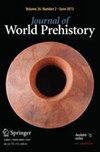Midden or Molehill: The Role of Coastal Adaptations in Human Evolution and Dispersal
IF 3.1
1区 历史学
Q1 ANTHROPOLOGY
引用次数: 51
Abstract
Coastal adaptations have become an important topic in discussions about the evolution and dispersal of Homo sapiens. However, the actual distribution and potential relevance of coastal adaptations (broadly, the use of coastal resources and settlement along shorelines) in these processes remains debated, as is the claim that Neanderthals exhibited similar behaviors. To assess both questions, we performed a systematic review comparing coastal adaptations of H. sapiens during the African Middle Stone Age (MSA) with those of contemporaneous Neanderthals during the European Middle Paleolithic. In both species, systematic use of marine resources and coastal landscapes constitutes a consistent behavioral signature over ~ 100,000 years (MIS 6–3) in several regions of Africa and Europe. We found more similarities than differences between Neanderthals and modern humans, with remaining disparities all in degree rather than kind. H. sapiens exploited a wider range of marine resources—particularly shellfish—more intensively. MSA shellfish-bearing sites are also more often associated with intense occupations on coastal landscapes, and more evidence of complex material culture such as shell beads. In terms of broader ramifications, Pleistocene coastal adaptations are best conceived of as an ‘add-on’ to previous adaptive strategies, complementing more frequently exploited inland resources and landscapes. Still, Neanderthals and modern humans increased their dietary breadth and quality, and added options for occupation and range expansion along coastlines. Potential evolutionary implications of these multi-generational behaviors include higher intakes of brain-selective nutrients as a basis for neurobiological changes connected to increased cognitive capacities, but also greater reproductive success, dispersal abilities and behavioral flexibility. Whether gradual differences between modern humans and Neanderthals stimulated different evolutionary trajectories is a question for future research.米登或鼹鼠丘:海岸适应在人类进化和扩散中的作用
沿海适应已成为智人进化和扩散研究中的一个重要话题。然而,在这些过程中,沿海适应的实际分布和潜在相关性(广泛地说,沿海资源的使用和沿海岸线定居)仍然存在争议,尼安德特人表现出类似行为的说法也存在争议。为了评估这两个问题,我们进行了一项系统的回顾,比较了非洲中石器时代(MSA)智人与同期欧洲中旧石器时代尼安德特人的沿海适应性。在这两个物种中,在非洲和欧洲的一些地区,系统地利用海洋资源和沿海景观构成了大约10万年的一致行为特征(MIS 6-3)。我们在尼安德特人和现代人之间发现了更多的相似之处,而不是差异,其余的差异都是程度上的,而不是种类上的。智人更密集地开发了更广泛的海洋资源,尤其是贝类。MSA贝类遗址也经常与沿海景观的密集职业有关,并有更多复杂物质文化的证据,如贝壳珠。就更广泛的影响而言,更新世沿海适应最好被视为先前适应策略的“附加”,补充更频繁开发的内陆资源和景观。尽管如此,尼安德特人和现代人增加了饮食的广度和质量,增加了职业选择,并沿着海岸线扩大了范围。这些多代行为的潜在进化含义包括,大脑选择性营养物质的摄入增加,这是与认知能力增强有关的神经生物学变化的基础,但也有更高的繁殖成功率、分散能力和行为灵活性。现代人和尼安德特人之间的逐渐差异是否刺激了不同的进化轨迹,这是未来研究的一个问题。
本文章由计算机程序翻译,如有差异,请以英文原文为准。
求助全文
约1分钟内获得全文
求助全文
来源期刊

Journal of World Prehistory
Multiple-
CiteScore
5.30
自引率
0.00%
发文量
8
期刊介绍:
Aims and scopeJournal of World Prehistory is an international forum for the publication of peer-reviewed, original treatments of the prehistory of an area or larger region. It was founded nearly thirty years ago with the remit of providing researchers, instructors and students with timely and authoritative research syntheses from all fields of archaeology. Journal of World Prehistory continues to lead in this field. Our classic articles may be 20,000 or 25,000 words long, as appropriate (excluding their extensive bibliographies). Since 2008 they have been joined by shorter (around 10,000 words), position pieces, which provide in-depth, thoughtful development of data and concepts, including interventions in controversies that unfold in our pages. These, written in a fashion interesting and accessible to all archaeologists, are often paired with a longer treatment in a single volume. In addition, readers now benefit from thematic special issues and double issues, in which a number of leading authors deal with a key theme in world prehistory, such as the origins of metallurgy (2009, volumes 22: 3 and 4), or the East Asian Neolithic (2013, in preparation). All papers are available first online, followed by the print edition. We aim to be truly global in coverage, with recent articles dealing, inter alia, with Amazonian lithics, the late Jomon of Hokkaido, the Bronze Age in Southeast Asia, the Neanderthal settlement of Doggerland, Neolithic networks in Western Asia, younger Dryas Paleo-Indian adaptations, and state formation in the Horn of Africa. Articles benefit from multi-language abstracts where appropriate, and we work closely with authors who do not have English as a first language to present major syntheses in a clear and concise way to an international audience. Traditionally, JWP focuses on earlier periods, but it includes the beginnings and early development of complex societies, and our understanding of ‘prehistory’ is broad and inclusive: for guidance on chronological scope, as well as our calendrical conventions, see the editorial article ‘Prehistory vs. Archaeology: terms of Engagement’ http://www.springerlink.com/content/346142p032604447/ Our unique remit means that we do not encourage the submission of unsolicited papers; rather, specific proposals are encouraged and then guided prior to independent peer review. Our aims and the way we fulfil them, with close contact with authors throughout the publication process, mean that JWP is not a venue for the simple and rapid dissemination of new results. Whilst we expect scholarship to be current, with syntheses including much new data, our readers look to us for definitive area/period coverage that will have continuing value.If you are proposing an article or special theme for Journal of World Prehistory, please read the Instructions for authors.Rated ''A'' in the European Reference Index for the Humanities (ERIH)?Journal of World Prehistory is rated ''A'' in the ERIH, a new reference index that aims to help evenly access the scientific quality of Humanities research output. For more information visit http://www.esf.org/research-areas/humanities/activities/research-infrastructures.htmlRated ''A'' in the Australian Research Council Humanities and Creative Arts Journal List. For more information, visit: http://www.arc.gov.au/era/journal_list_dev.htm
 求助内容:
求助内容: 应助结果提醒方式:
应助结果提醒方式:


